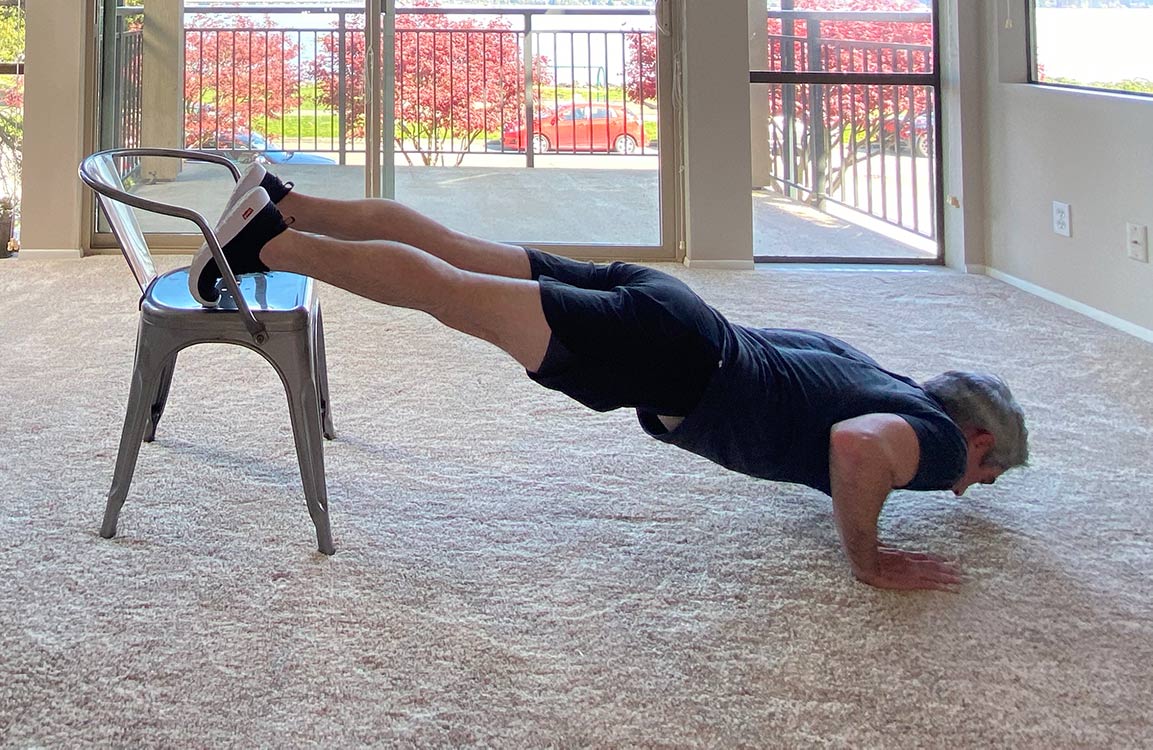
Grab A Chair For These 6 Challenging Strength Exercises
By Chris Carmichael,
Founder and Head Coach of CTS
Creativity is the name of the game when it comes to staying fit or gaining fitness during worldwide ‘Stay at home’ orders. Like many of you, my social media feeds and email inbox have been filled with all manner of indoor cycling and at-home strength workouts. This week I was talking with an athlete I work with who has an indoor cycling trainer but no strength training equipment at all. While there are plenty of bodyweight strength exercises that require no equipment (bodyweight squats, lunges, planks, crunches, pushups, etc.) we were looking for ways to increase the difficulty and variety in his at-home program.
He had chairs at the kitchen table…
In the spirit of “do what you can, with what you have”, I created a strength training circuit for him that centered on the chair. It’s not an earth-shattering revelation of a workout, but it was designed (where possible) to increase resistance compared to similar exercises without the chair. For instance, we all do pushups with our toes on the ground, but we can increase the difficulty of the exercise by elevating your feet with a chair.
Here is the 6-exercise circuit I gave him, and that you can use to add some variety and creativity to your at-home strength workouts.
Chair taps
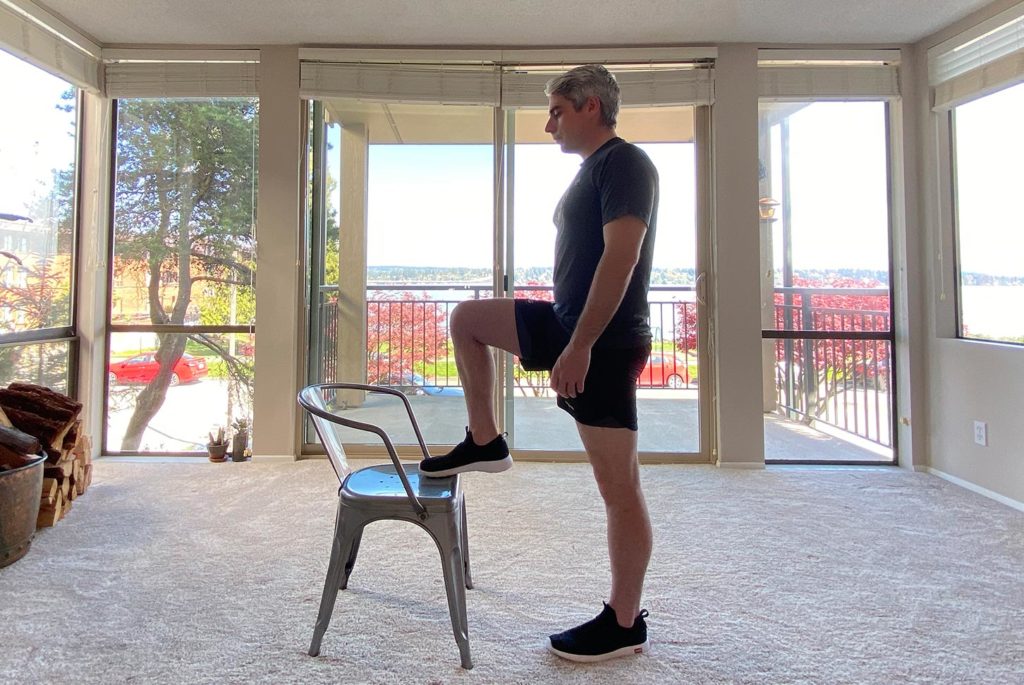
This is a good exercise to start out with because it is more of an aerobic conditioning exercise than a true strength training movement. It gets your heart rate going and helps you get primed for more strenuous moves. Start facing the chair with the ball of your right foot resting lightly on the front edge of the chair. With your left foot, push off the ground as you bring your right foot down to support your weight. Repeat the motion by pushing off with your right foot and continue alternating foot taps on the front of the chair. Try to be light on your feet and quick. Complete as many as you can in 30 seconds, rest 30 seconds, repeat for another 30 seconds.
Decline Pushup
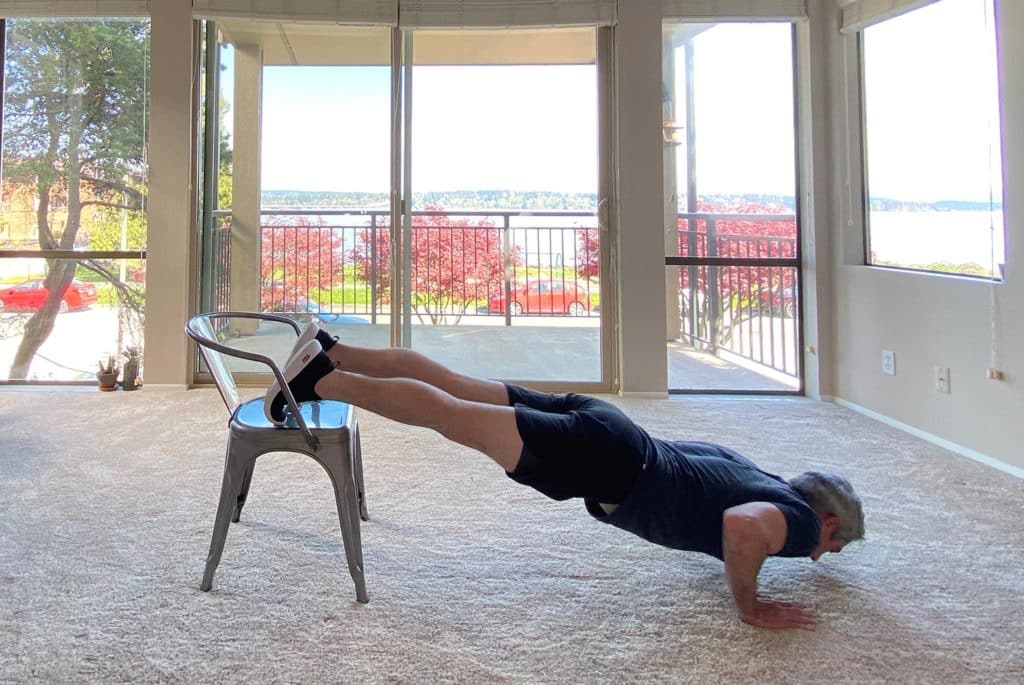
As I mentioned above, elevating your feet is a way to increase the difficulty of a standard pushup. Start in a plank position with your toes on the seat of the chair and your hands slightly wider than shoulder width. Lower your upper body toward the floor and push back up to the starting position. Try to keep the whole movement fluid and evenly paced, meaning that you are lowering and raising your body at roughly the same speed and not pausing at either the top or bottom.
Step ups
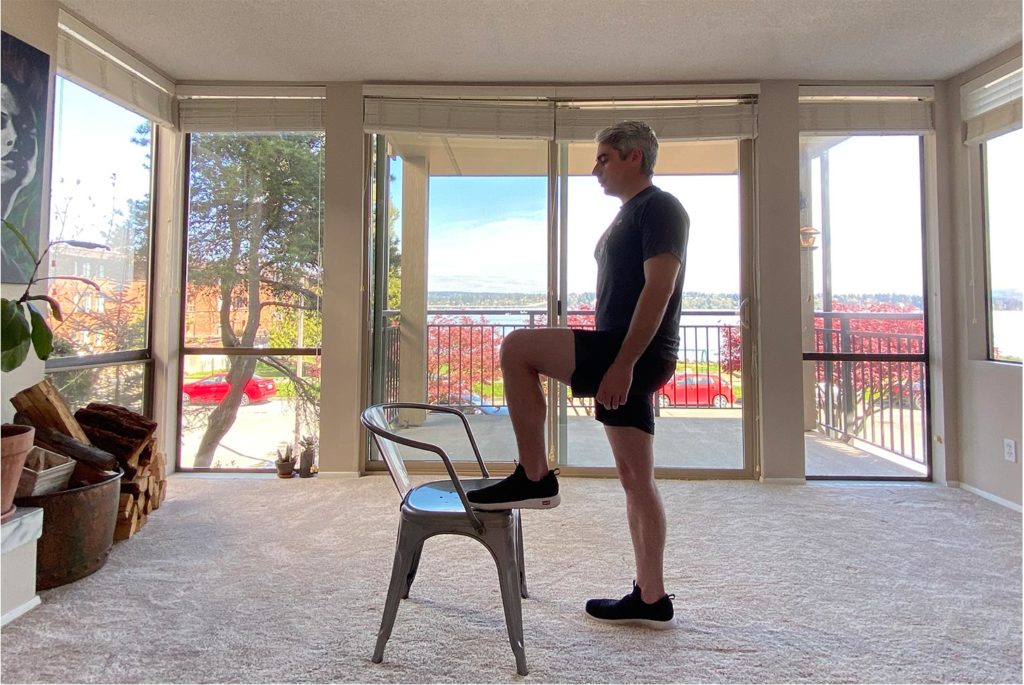
I’ve always been a fan of step ups for cyclists, runners, and triathletes. Squats are wonderful, but cyclists and runners also benefit from single-leg exercises because they are more specific to the demands of the sport. A step-up not only strengthens the glutes, hamstrings, and quads on each side, but it also strengthens the musculature that helps keep your hips level and stable as you drive with one leg.
Stand facing the chair with your right foot flat on the seat of the chair so that your thigh is roughly parallel to the ground. Drive your right foot down into the chair to rise to standing position atop the chair. Reverse the motion to lower your left foot back to the floor in a controlled descent. Repeat the movement with your left foot and continue alternating for 15 repetitions on each leg. Keep your upper body relatively upright during the exercise, although you may need to move your arms out in front of you to maintain balance.
► Free Cycling Training Assessment Quiz
Take our free 2-minute quiz to discover how effective your training is and get recommendations for how you can improve.
Chair dips
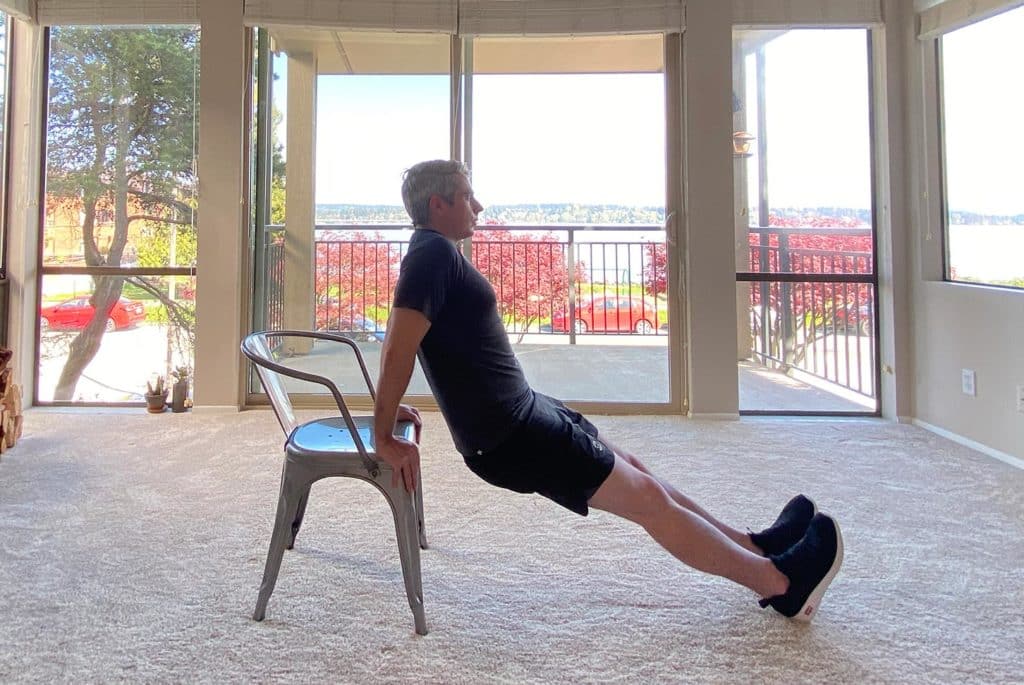
Chair dips are one of the most effective workouts for triceps, but they also target the pectoralis muscles of the chest, the trapezius muscles of your upper back, and serratus anterior along the sides of your ribs. Sit on the front of the chair with your legs stretched out straight in front of you and your hands gripping the sides of the chair at the front corners of the seat. Push down with your arms to lift yourself off the seat and shift forward so you can lower your body in front of the chair. Aim to lower your hips until your arms create a 90-degree angle, but be careful not to go too low with these, particularly if you have a history of shoulder injuries. Push your palms into the chair to straighten your arms before repeating the movement. Complete 10 repetitions and stop before failure. You can make these a bit easier by bending your knees instead of having them straight in front of you. These can also be done between two chairs for a wider stance.
Bulgarian split squat
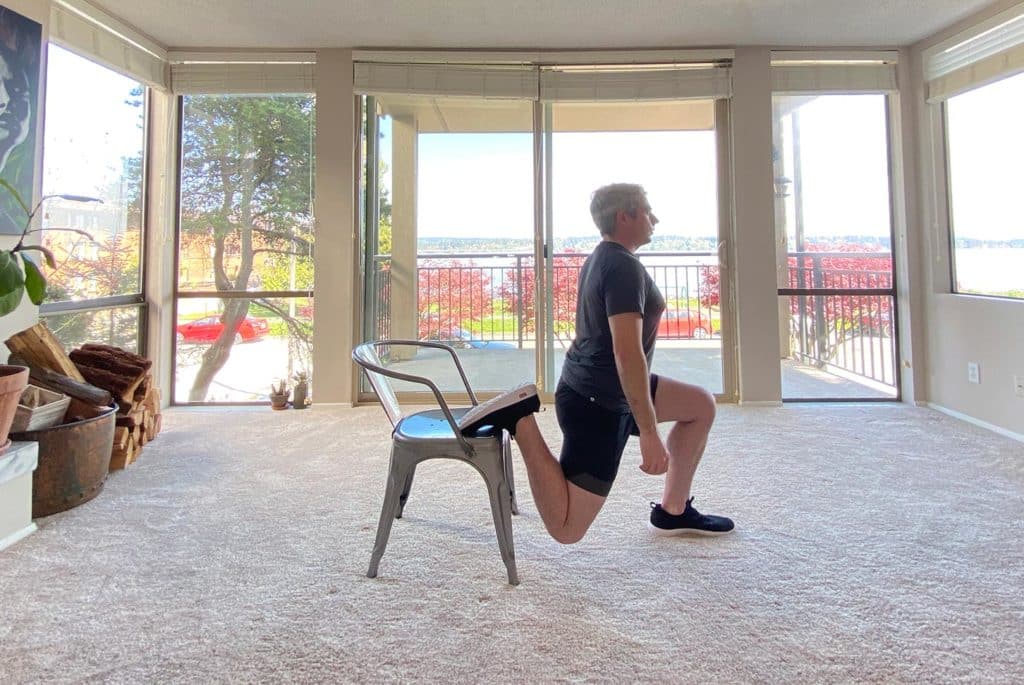
A Bulgarian split squat can be thought of as a more advanced version of a lunge. I also find them to be less of a balance challenge than one-legged squats or pistol squats. Stand with your back to the seat of the chair. Take a step forward and then put the top of your right foot on the seat of the chair. Keeping your chest high and gaze forward, lower your hips until your left thigh is about parallel to the ground. Make sure your knee doesn’t go forward of your toes. Drive with your left leg to raise to the starting position. Complete 10 reps and then repeat with the other leg.
Pike Press
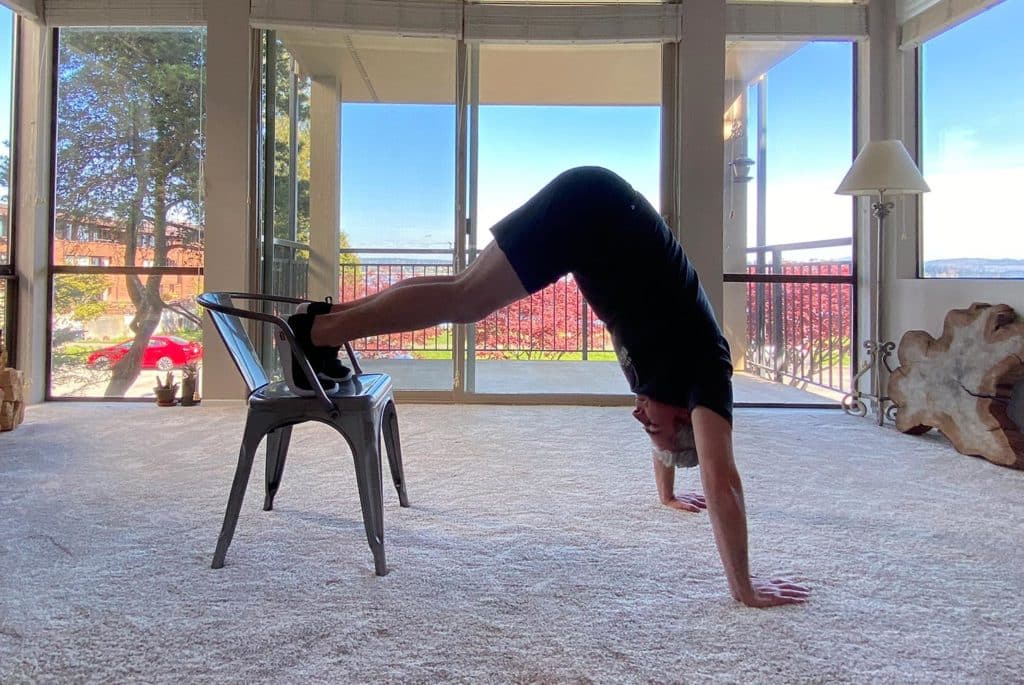
An overhead press is one of the more difficult movements to accomplish without strength training equipment. A Pike Press provides a way to work the deltoids and trapezius, along with the triceps and chest. As I have learned the hard way, this variation is also less hazardous than a handstand pushup (feet up on the wall) because you’re less likely to end up banging your head on the ground after the last rep. Start in the same position as the Decline Pushup. Raise your hips toward the ceiling. Your arms will now be overhead and your back will be angled down toward the floor. Bend your elbows to lower your head toward the ground and straighten your arms as you push back up to the starting position. The more vertical you make your upper body, the more this exercise targets the shoulders (like an overhead press). The shallower the angle of your upper body, the more it resembles a decline pushup. Many endurance athletes find this exercise to be harder than it sounds. Aim for 10 reps per set.
I recommend doing these exercise as a circuit with one minute of rest between exercises, and two minutes between circuits. Aim for three circuits, and add more based on fitness level and progress.
► FREE Mini-Course: Learn How to Maximize Your Limited Training Time
Learn step-by-step how to overcome limited training time and get faster. Walk away with a personalized plan to increase your performance.
"*" indicates required fields

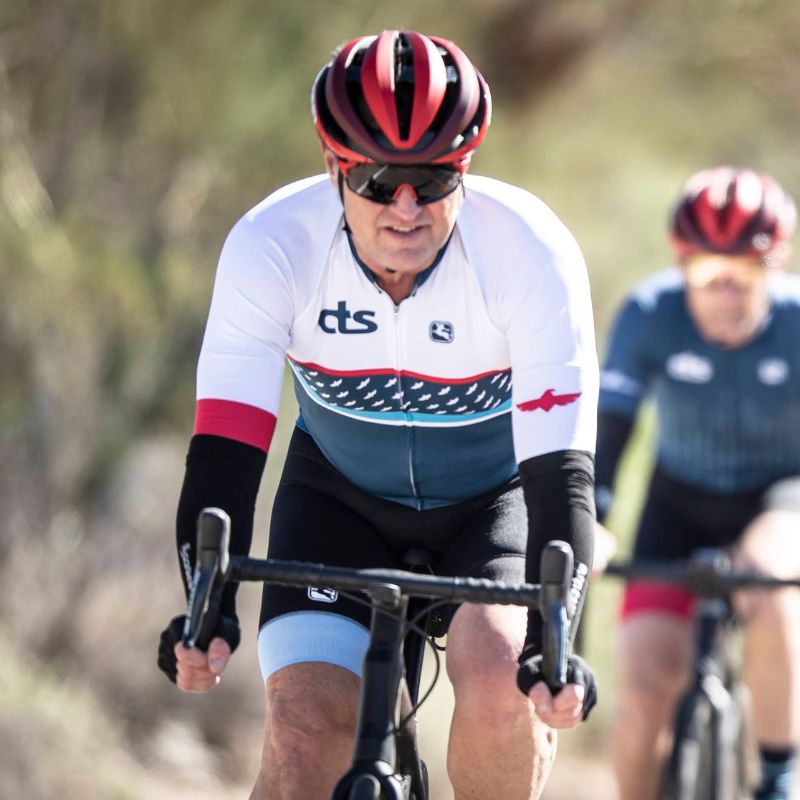
Comments 1
I often do push ups with my feet on my exercise ball. I find it much EASIER doing those, rather than the standard ones. (Can do 25-50% more reps.) Any idea why?